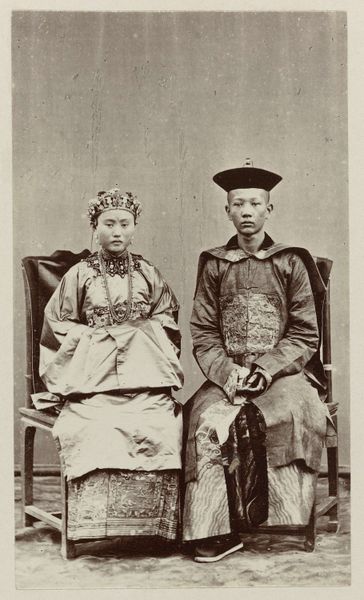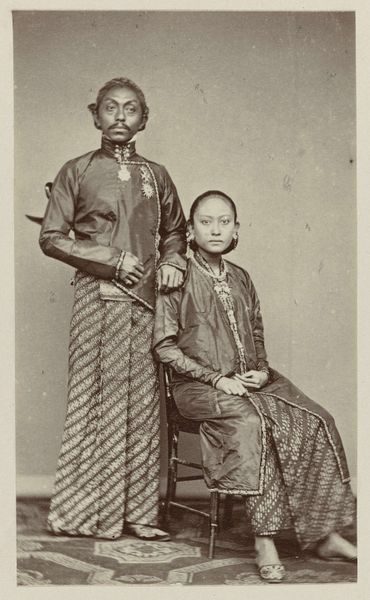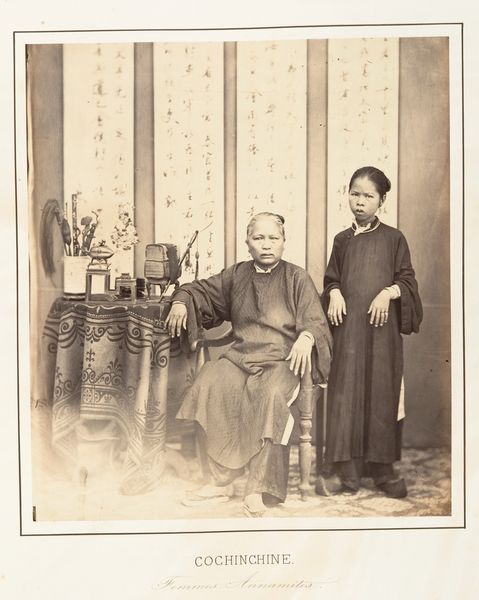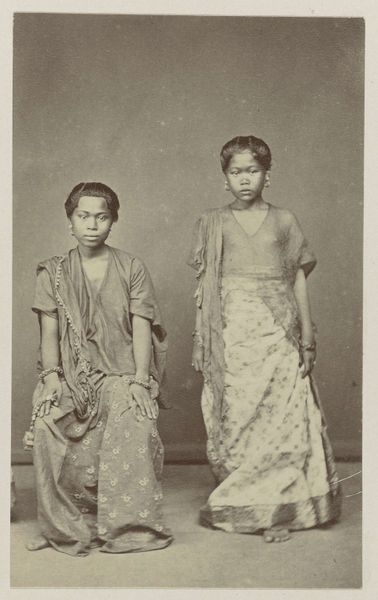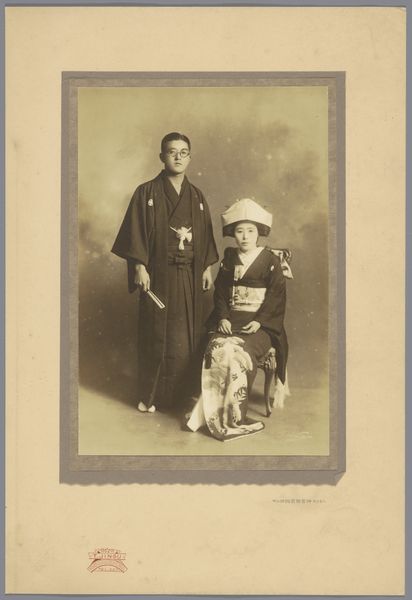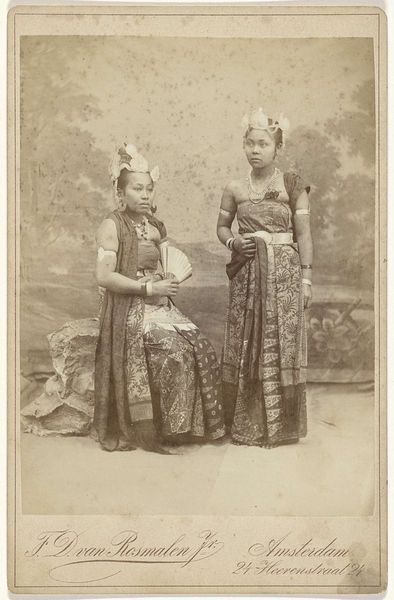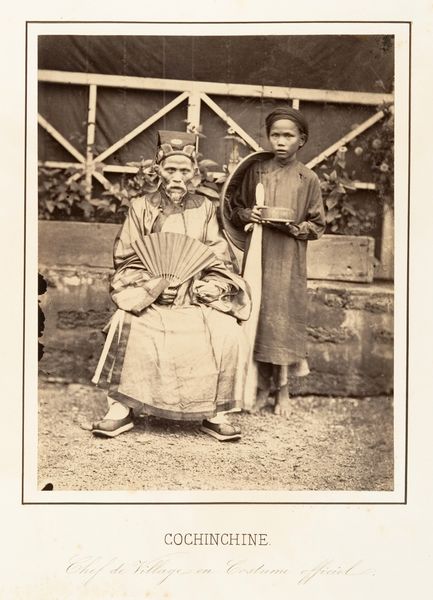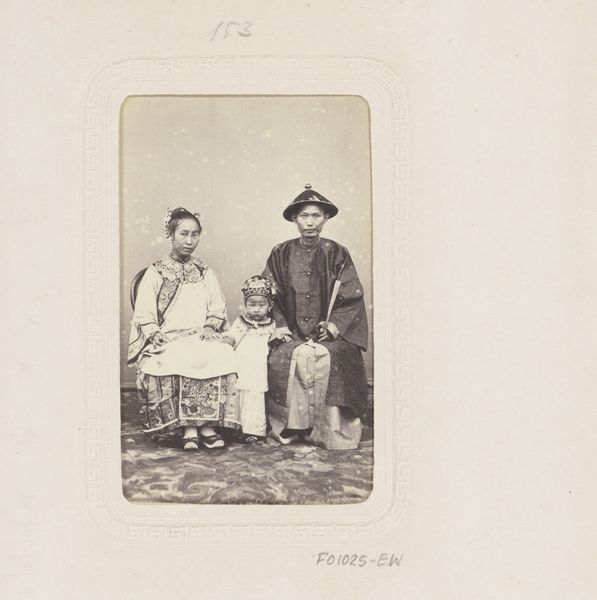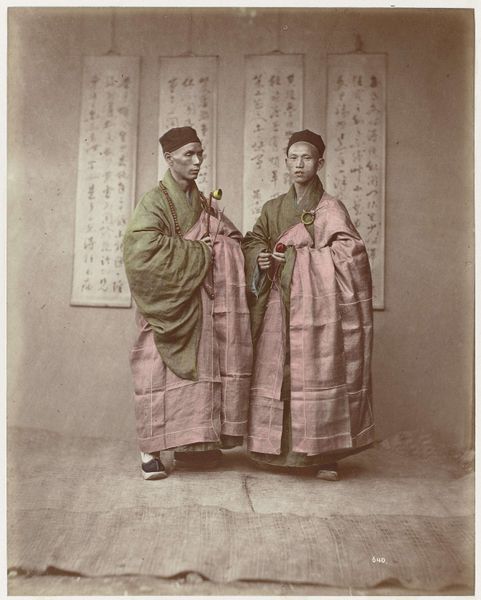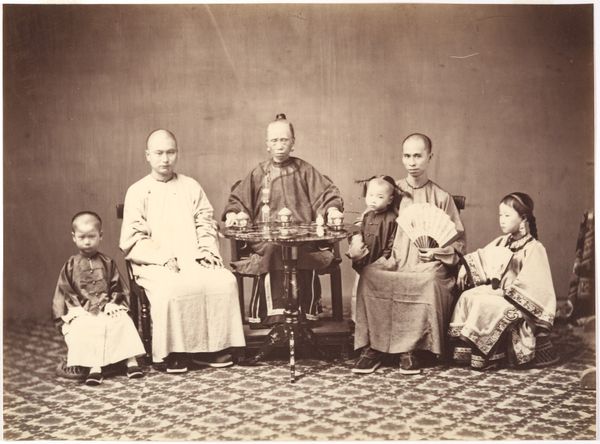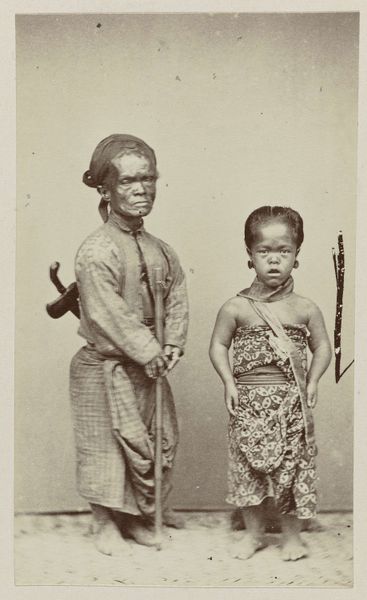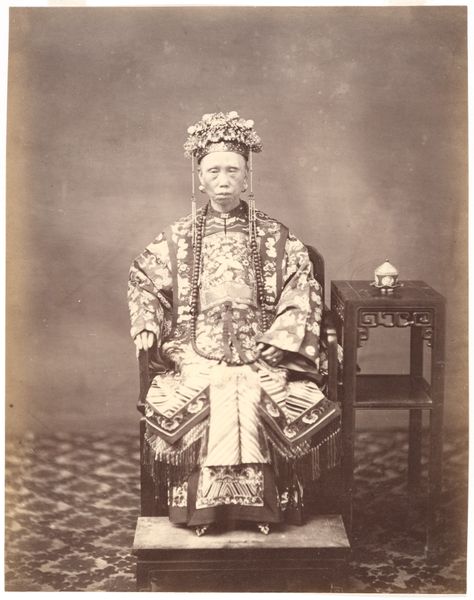
photography, albumen-print
#
portrait
#
wedding photograph
#
wedding photography
#
asian-art
#
archive photography
#
photography
#
historical photography
#
couple photography
#
orientalism
#
19th century
#
albumen-print
Dimensions: height 95 mm, width 55 mm
Copyright: Rijks Museum: Open Domain
Curator: This photograph, dating from around 1870, is titled "Chinese Couple with Child" and is attributed to Woodbury & Page. It's an albumen print currently held at the Rijksmuseum. Editor: It has such a solemn feel, doesn't it? The light seems carefully arranged to highlight the textures of their clothing. Notice how the composition is quite formal, almost symmetrical. Curator: Absolutely. As an albumen print, it speaks volumes about photographic processes of the time, reflecting a significant investment of labor. Consider the egg whites used for the paper coating and the careful development process; it's all a meticulous practice that emphasizes the sitter's social status as they were likely affluent to afford this service. The exoticizing 'Orientalist' lens adds further layer, since the image would have had to travel back to Europe to be seen. Editor: Precisely, if we dissect their garments through visual markers, the high collar of the man’s robe signifies stature, the delicate embroidery on the woman’s attire, while speaking of refinement, is not dissimilar from Victorian tastes. Even the child’s adornments work together to orchestrate meaning, contributing to the image’s cultural coding. Curator: That cultural coding isn’t separate from its creation as commodity. Woodbury & Page operated a studio in what was then called the Dutch East Indies. Photography in this context represents more than an art form—it's tied directly to colonial power structures and the representation of colonized peoples. How did this object circulate, what were the relationships between the Europeans running the studio and the people they portrayed? Editor: True, yet the image itself operates on multiple levels. Take, for example, the family's expressions – their solemnity lends itself to a reading that goes beyond colonial documentation. There’s a universality there; parenthood and dynasty that translates through the immediate visual language regardless of background. It makes the photo so incredibly powerful. Curator: Right, by thinking through labor, class, and commerce that undergird the image's creation, we can unpack more about that power. Thank you. Editor: Agreed. Considering the composition, technique, and historical implications gives it such greater significance.
Comments
No comments
Be the first to comment and join the conversation on the ultimate creative platform.
